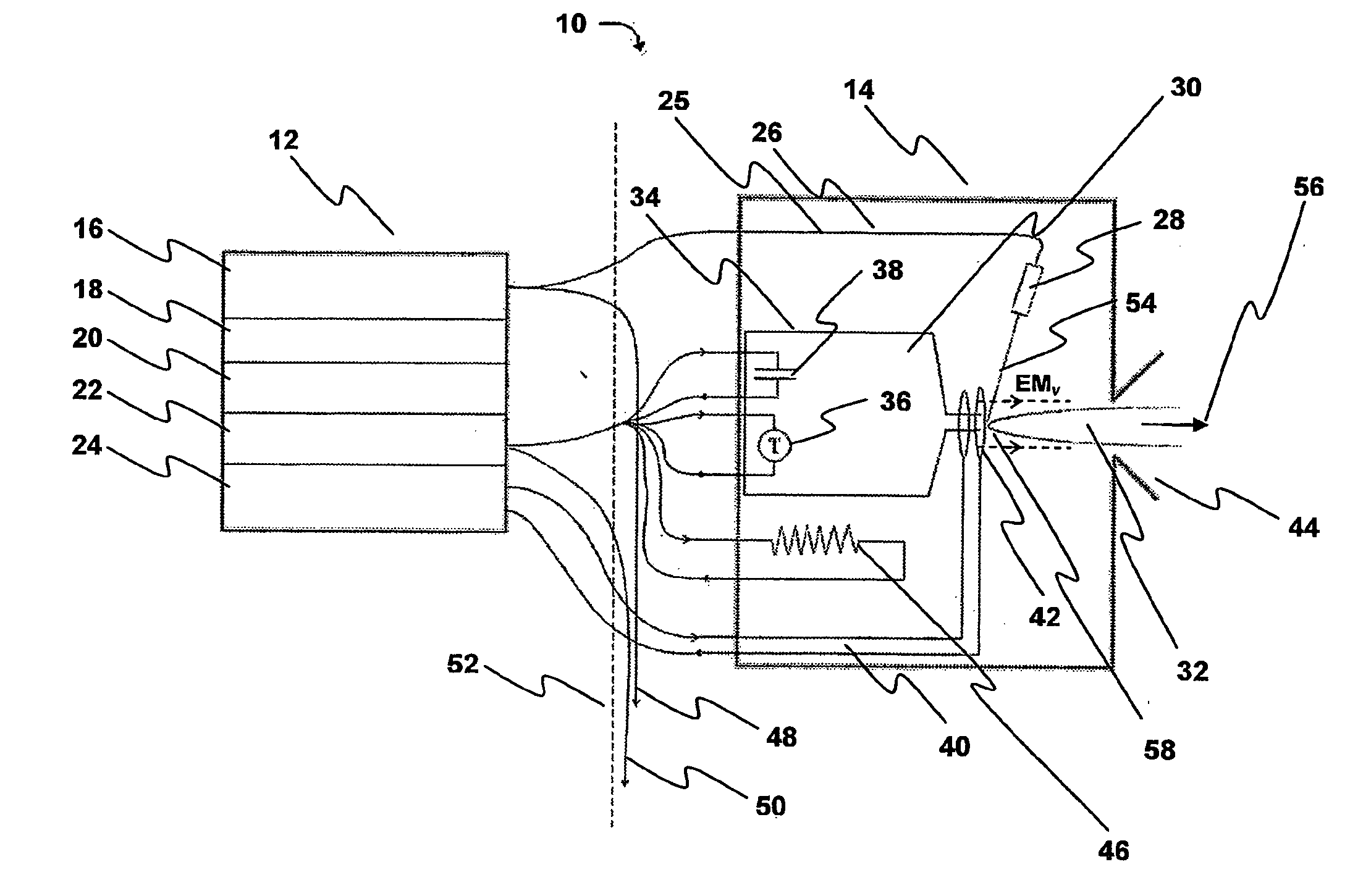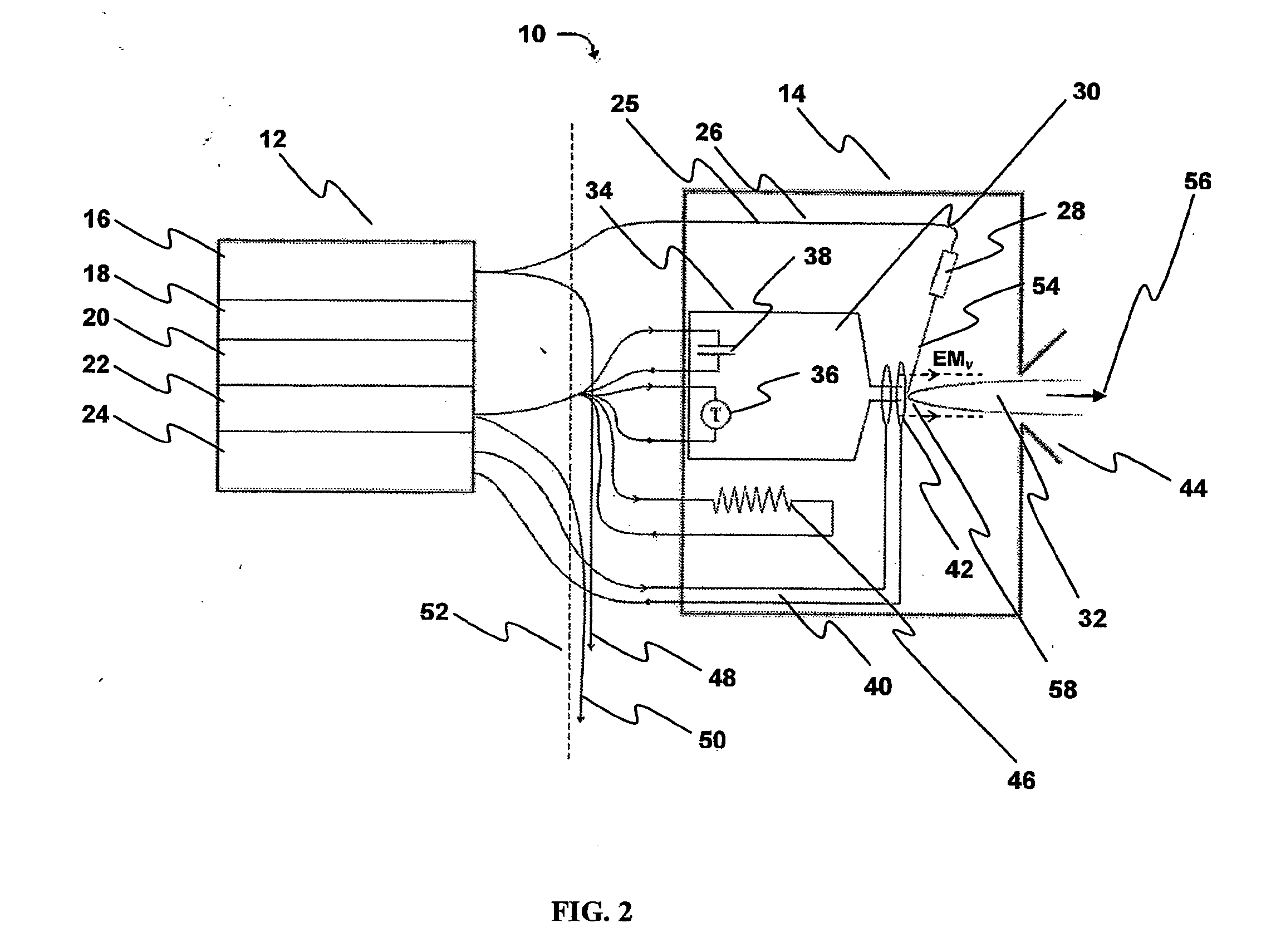Laser propulsion thruster
a thruster and laser technology, applied in the field of laser propulsion thrusters, can solve the problems of poor repeatability, low specific impulse, low efficiency in propellant and power usage, etc., and achieve the effect of improving the achievable thruster performance, minimizing contamination and undesirable cross-coupling effects
- Summary
- Abstract
- Description
- Claims
- Application Information
AI Technical Summary
Benefits of technology
Problems solved by technology
Method used
Image
Examples
Embodiment Construction
[0043]FIG. 2 shows one hybrid-electric laser propulsion (HELP) thruster 10, illustrating certain block functional components of thruster 10 used in thruster operation such as described below. In particular, HELP thruster 10 provides four principle functions: laser ablation, plasma collimation, propellant feed, and control & power conversion; in one embodiment, these functions are implemented by two units: an electronics & control unit 12 and a replaceable modular propellant pod 14.
[0044] Unit 12 is shown with a low power, diode pumped solid-state laser array 16, a power converter 18, a micro-controller 20, a propellant control board 22, and an electromagnetic (EM) pulse generator 24. These components of unit 12 enable control of components of unit 14, such as: laser control, closed-loop heater control and control of an electromagnetic field 58.
[0045] Laser-light 25 from laser array 16 is carried to a Q-switched microchip laser 28 (see FIG. 3) of unit 14 through fiber optics 26; th...
PUM
 Login to View More
Login to View More Abstract
Description
Claims
Application Information
 Login to View More
Login to View More - R&D
- Intellectual Property
- Life Sciences
- Materials
- Tech Scout
- Unparalleled Data Quality
- Higher Quality Content
- 60% Fewer Hallucinations
Browse by: Latest US Patents, China's latest patents, Technical Efficacy Thesaurus, Application Domain, Technology Topic, Popular Technical Reports.
© 2025 PatSnap. All rights reserved.Legal|Privacy policy|Modern Slavery Act Transparency Statement|Sitemap|About US| Contact US: help@patsnap.com



